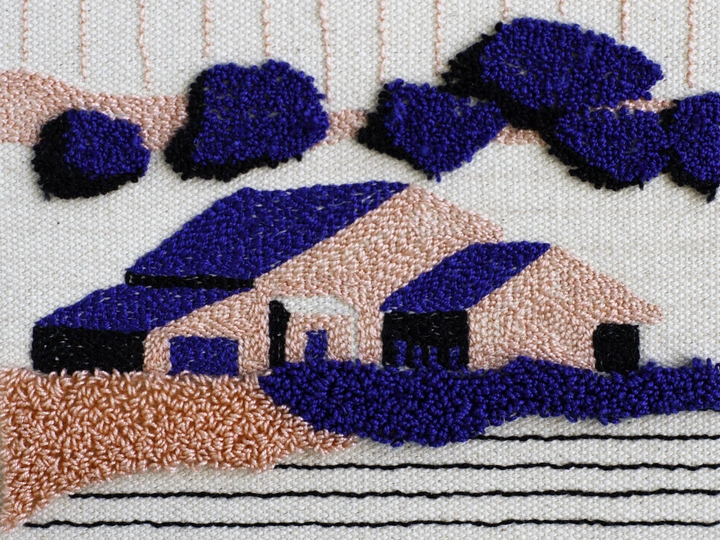Common threads

Lola Goyanes is an architect and textile artist. She works independently in the study of rural areas, with a special interest in the relationship between productive heritage and landscape. Since 2020, she has been dedicated to the dissemination of textile traditions through embroidery workshops that bring this artistic practice to new audiences. She currently combines both areas of research, seeking an approach to the territory through a sentimental representation that combines tangible and intangible heritage.
/
She studied Architecture at the University of Zaragoza, specializing in Urban and Landscape Design (2012-2018). She developed the research paper Villafeliche: landscape and memory, studying the marks on the territory of ancient industry and agriculture in a village of moorish origin in Aragon. She studied for a master's degree in Architecture at the Escuela Superior del Vallès, Barcelona (2019). She is currently combining her professional practice with the study of Fine Arts at the University of Seville (2020-present).
The relationship with our landscape has changed radically over the last 50 years. So much so, that we barely recognize its constructions, networks and traditions. There is still a generation that can be a link between life before and after the last rural exodus. But what will we remember 50 years from now?
Common threat seeks a way of observing and studying the productive landscape and its traditional constructions. Since 1950, the depopulation of rural areas has led to a neglect of local farming systems and traditional trades. The study of vernacular work models and local relations reveals networks and archetypes applicable to the city of the future. Through craft techniques in the process of disappearing (such as embroidery and woodcut), we can represent these studies, bringing crafts and architecture together again to face the ecological and cultural paradigm that defines the 21st century.
Working together with LINA's partner institutions would allow the study to be extended to a European scale. Through collaborative workshops, we could analyse the rural cultural heritage of specific regions and educate new audiences in craft techniques. Through this collaborative work, we could produce a catalogue of the European rural landscape. The investigation of the rurality surrounding the European capitals will allow us to rethink its roots, revisiting crafts with a critical eye that brings a new contemporary perspective.